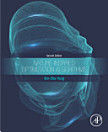eBook 정보
저자 정보
Dr. Karmakar obtained PhD in ITEE from the University of Queensland in 1999. Dr. Karmakar’s PhD work on Antennas for Mobile Satellite Communications was elected one of the top ten research findings at UQ in 1998 and 3rd best student paper in 1997 APMC and published in UQ News, Canberra Times, and ABC Radio. An Australian defense analyst hailed this design as the first fully planar low-cost phased array antenna designed in Australia.
In 2004 Dr. Karmakar formed RFID and Antenna Research Group at Monash University. The group is supported by 4 ARC funded projects which are worth > $2M. In 2006 he initiated research on chipless RFID physical layer development at Monash University with supports from an ARC Discovery Grant DP0665523: Chipless RFID for Barcode Replacement. The invention of Chipless RFID generated 2 Australian and 2 international (PCT) patents (pending), 1 scholarly book, 16 scholarly book chapters, 7 refereed journal and 22 conference papers. This is the first chipless RFID tag to combine RFID with the ultra-wideband (UWB) technology. His recent industry interactions have initiated new research collaboration LP0989652: Printable Multi-Bit Radio Frequency Identification for Banknotes. This project was elected one of only ten best research proposals (out of approximately 2,000) by ARC in October 2008. He is a CI of ARC SRI: Bionic Vision (worth $8M) and will provide intellectual leadership in the wireless division of the research team.Yang Yang (S’11–M’14) was born in Inner Mongolia, China and received MEng, MSc, Ph.D degrees from Monash University, Melbourne, Australia, in 2007, 2008 and 2013, respectively. From 2012 to 2015, he was an Asia-Pacific GSP Engineer at Rain Bird and a Global GSP Success Award holder of the year 2014. He served as a Senior Research Associate with Department of Engineering, Macquarie University, Sydney, during April 2015 to April 2016. From April 2016 to December 2016, he was a Research Fellow with State Key Laboratory of Millimeter-Waves, City University of Hong Kong. In December 2016, Dr Yang Yang joined School of Electrical and Data Engineering, University of Technology Sydney. His research interests include RFIC, microwave, millimeter-wave and terahertz devices/circuits, reconfigurable antennas, wearable antennas, wearable medical devices, sensors and remote sensing techniques. He has over 50 international publications.
Dr. Abdur Rahim







